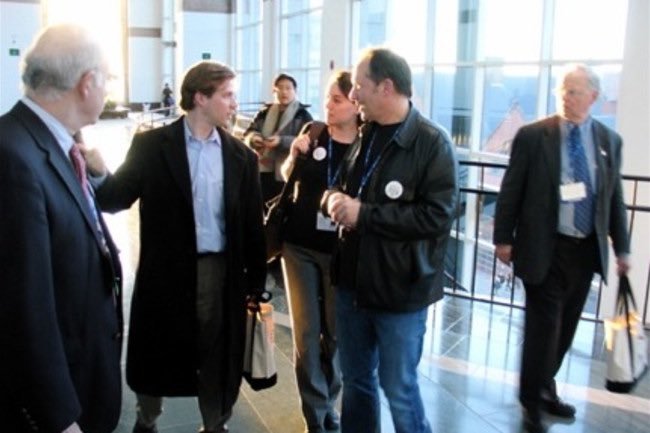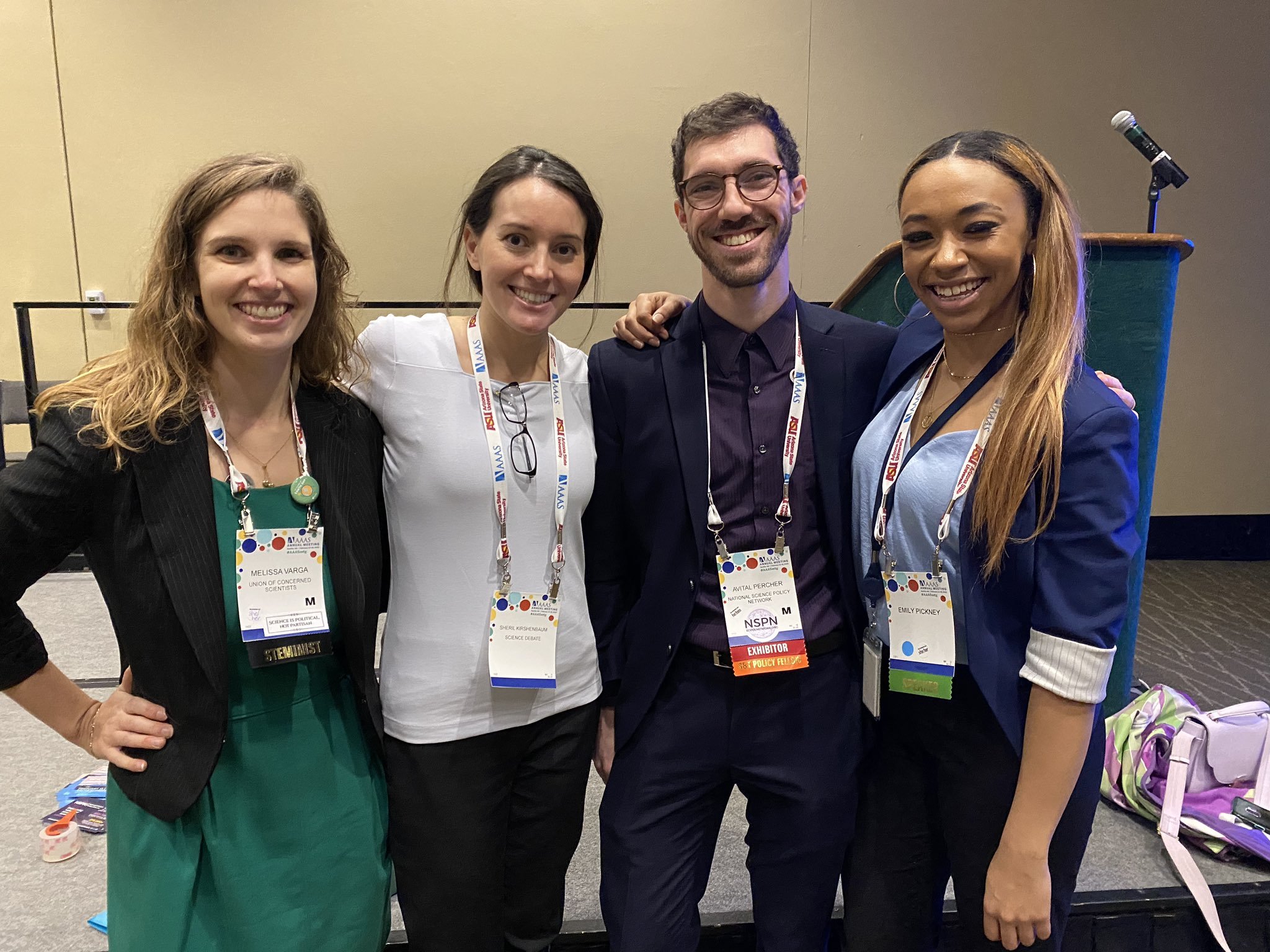
Where do your candidates stand on critical science and technology issues?
Science on the Ballot (formerly Science Debate) asks candidates, elected officials, the public, and the media to focus more on science policy issues of vital importance to modern life. As part of a 501(c)(3) non-profit, Science on the Ballot is completely nonpartisan.
More information and events about upcoming programing over the next few months coming soon.

PROGRAM GOALS
Train policy advocates in non-partisan coalition building, candidate outreach, and media relations.
Engage local, state, and federal political candidates on science policy topics through a coalition developed questionnaire.
Elevate science policy topics in local communities through candidate outreach, partnership with science/policy organizations, and media relations.

THE ORIGINS OF SCIENCE ON THE BALLOT
Science on the Ballot began as Science Debate, co-founded in 2007 by Matthew Chapman, Shawn Lawrence Otto, Chris Mooney, Lawrence Krauss, Austin Dacey, and Sheril Kirshenbaum. Michael Halpern and Darlene Cavalier joined the organization shortly after. The primary reason for starting Science Debate was in response to the near absence of science and technology topics in the presidential debates and in the campaigns. Within weeks of its founding, people and organizations from across the political spectrum signed the following petition:
"Given the many urgent scientific and technological challenges facing America and the rest of the world, the increasing need for accurate scientific information in political decision making, and the vital role scientific innovation plays in spurring economic growth, we call for public debates in which the U.S. presidential and congressional candidates share their views on science and technology, health and medicine, and the environment."
Supporters included prominent institutions such as the American Association for the Advancement of Science (AAAS) and the U.S. National Academies, as well as political strategists ranging from John Podesta, President Bill Clinton’s former chief of staff, on the left to Newt Gingrich, former House Speaker, on the right.

MAKING SCIENCE POLICY ANSWERS ROUTINE
In 2008, then nominees Senator Barack Obama and Senator John McCain agreed to participate in an online “debate.” The candidates’ answers to “The Fourteen Top Science Questions Facing America” were shared widely online and published in the journal Nature. In 2012, a similar endeavor was undertaken with President Obama and then Republican nominee Governor Mitt Romney. Scientific American published the responses and rated them based on current scientific understanding at that time. In both years, the candidates' answers made nearly 850 million media impressions.
In 2016, all four major candidates: President Donald Trump, Senator Hillary Clinton, Governor Gary Johnson, and Jill Stein responded in writing to “Twenty key science questions facing America.”

BEYOND DEBATE
So we prepared our questions for 2020 and pressed on. Incredibly, in the middle of the pandemic, when medical scientists were having to contend with polticians pushing hydroxychloroquine and bleach injections, Joe Biden refused to answer our questions. Needless to say, Trump followed suit. Was science now too controversial for presidential candidates to risk talking about it?
It was depressing. But there was one bright spot. During this election and in the midterms on either side of it, we formed an informal partnership with the National Science Policy Network. This grassroots organization was cultivating the energy of early career scientists across the country, providing resources, opportunities, and community support to engage them in policy making. The passion and capacity of their volunteers was infectious and inspiring.

NEW PARTNERSHIPS
Aided at first by Science Debate co–founder Sheril Kirshenbaum, NSPN activated its science advocacy chapters across the country, supporting state coalitions to develop science questions to ask their local candidates at all levels. In 2022, NSPN engaged 54 volunteer coalition members and got responses from 71 candidates.
As a result of this collaboration and the youth, energy, and organizational drive that NSPN provided, Science Debate decided to merge with NSPN to become a program that is about more than the debate - keeping Science on the Ballot, hearing from candidates, and engaging with the public on the most pressing issues facing our society and shaping our collective future.






